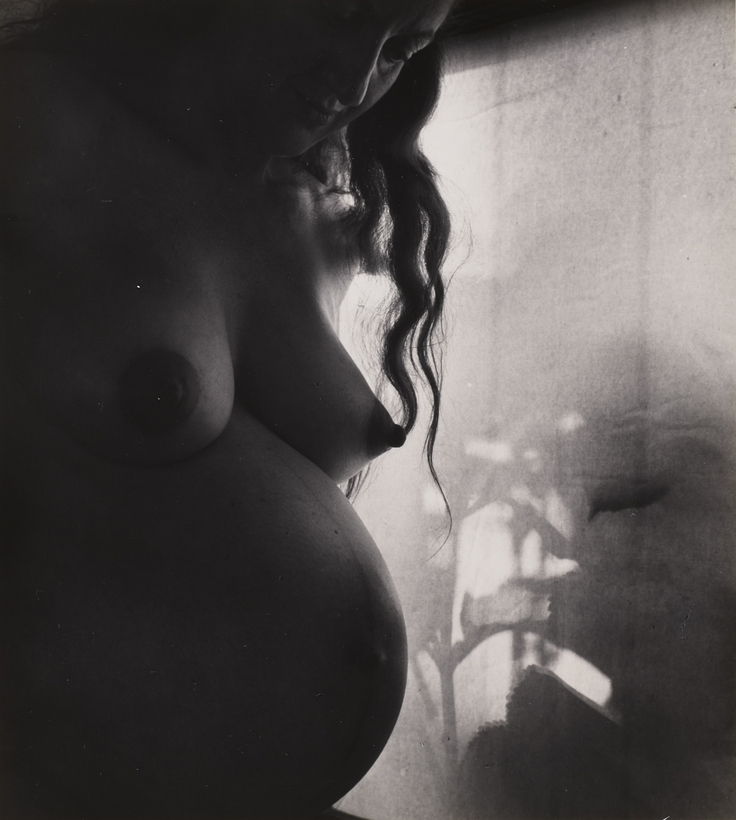Among the first female photographers to represent the female nude, Imogen Cunningham challenged gender restrictions in both her profession and her art. Given the span of her career, from 1910 to the mid-70s, the variety of subjects and techniques to be found at the Seattle Art Museum, in the first major retrospective of Cunningham’s work in 35 years, should be no surprise.
The photographer, who earned a university degree in the chemistry of photographic processes, employed a meticulous yet ever restless eye. As a result, it’s difficult to point to just one photo that typifies her work. While this testifies to an abundant imagination, it has also made her influence less identifiable than that of her contemporaries, such as Edward Weston, Ansel Adams, or Berenice Abbott.

The soft-focus landscapes that mark her first active years evolved into depictions of plants in the 1920s, images notable for their exquisite detail. Over successive decades, Cunningham executed both formal and candid portrayals of artists and actors, such as Gertrude Stein, Cary Grant, Ruth Asawa, and Martha Graham, while also experimenting with photomontage and street photography. Threaded through this diverse oeuvre is an abiding fascination with the body in its many manifestations.
Cunningham trained her lens on discrete anatomical parts (a pair of bent legs in a 1929 study read ambiguously, the knees, clinically rendered, resembling a rocky outcropping), the gyrations of modern dancers, and the nude bodies of men and women. The pregnant woman whose shadowy form occupies just more than half the frame in It Is Spring (1959) inexpressively contemplates her round belly, which is defined with geometric precision against the gauzy light of a window. The contrast between the darkened figure and the granulated sunlight highlights her isolated inwardness. It is perhaps this quality of reflective quiet that epitomizes Cunningham’s art across time. In all of her photos we sense not only her concentration, but the vibrancy of being in subjects animate and inanimate.

For instance, presented in extreme close-up, the magnolia blossom in Tower of Jewels (1925) reveals a startling complexity: rising amid lush petals, the curling carpels and beaded stamens appear ready to burst forth, their intricacy evidence of an inherent propulsive energy. Even as her photos penetrate to the core of things, they do so with understatement, offering whispered revelation.
A master of perpetual re-invention, Cunningham refused to settle for the expected. Months before her death, in 1976 at age 93, when asked which of her photos was her favorite, she replied, “The one I’m going to take tomorrow.” —Albert Mobilio
“Imogen Cunningham: A Retrospective” is on now at the Seattle Art Museum


 Discover
Discover